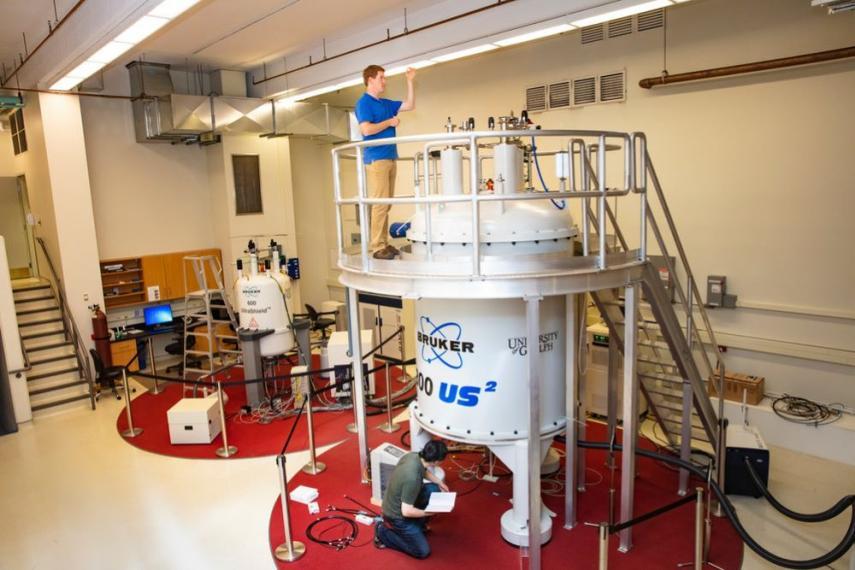Proteins Offer Insights into Parkinson’s

Examining proteins could lead to important breakthroughs for treating Parkinson’s disease.
More than 100,000 Canadians live with Parkinson’s disease, a progressive and long-term brain disorder that impacts the central nervous system. This disorder can cause shaking, stiffness, challenges for balance, and difficulty walking. There is no cure for Parkinson’s but understanding what is happening at the molecular level may help provide insight into the disease’s progression. This information could facilitate early intervention and treatments, providing hope for thousands of people.
The Role of Proteins
Dr. Vladimir Ladizhansky, a professor in the Department of Physics, Dr. Scott Ryan, a professor in the Department of Molecular and Cellular Biology, and collaborators are examining alpha-synuclein, a small presynaptic protein believed to play an important role in the development of Parkinson’s Disease. Under normal conditions, alpha-synuclein exists in the soluble and membrane-bound forms. In Parkinson’s Disease, it can also form toxic aggregates called fibrils.
Advanced Imaging Techniques
The researchers used “magic angle” spinning Nuclear Magnetic Resonance (MAS NMR) to examine the structure and dynamics of the C-terminus of alpha-synuclein in the membrane-bound and fibrillar forms. In MAS NMR, a sample is placed in a strong magnetic field and is rapidly rotated around an axis pointing at the “magic angle” of approximately 54.74 degrees with respect to the magnetic field. This technique helps to increase resolution and improves structural information content. MAS NMR enables researchers to examine the structure and motions at the atomic scale without interfering with the material itself.
Basis for Future Research
The team found that C-terminus is flexible and unstructured in all three of the samples they examined.
“The information obtained in this project will serve as a basis for further studies of interactions between the proteins and the lipid membranes,” says Ladizhansky. “By better understanding the protein characteristics and how they change under different conditions, we hope to learn more about the protein’s role in Parkinson’s disease. This information is critical for the development of future treatments.”

Vladimir Ladizhansky is a Professor and former Tier II Canada Research Chair in Biophysics in the Department of Physics.
This work was supported by Natural Science and Engineering Research Council of Canada, The Parkinson Foundation of Canada, Canadian Institutes for Health Research, Canada Foundation for Innovation, Ontario Ministry of Economic Development and Innovation, and by the University of Guelph through their support of the Advanced Analysis Centre.
Medeiros J, Bamm VV, Jany C, Coackley C, Ward ME, Harauz G, Ryan SD, Ladizhansky V. Partial magic angle spinning NMR 1 H, 13 C, 15 N resonance assignments of the flexible regions of a monomeric alpha-synuclein: conformation of C-terminus in the lipid-bound and amyloid fibril states. Biomolecular NMR Assignments. 2021 Apr 2:1-7. doi: 10.1007/s12104-021-10020-z.